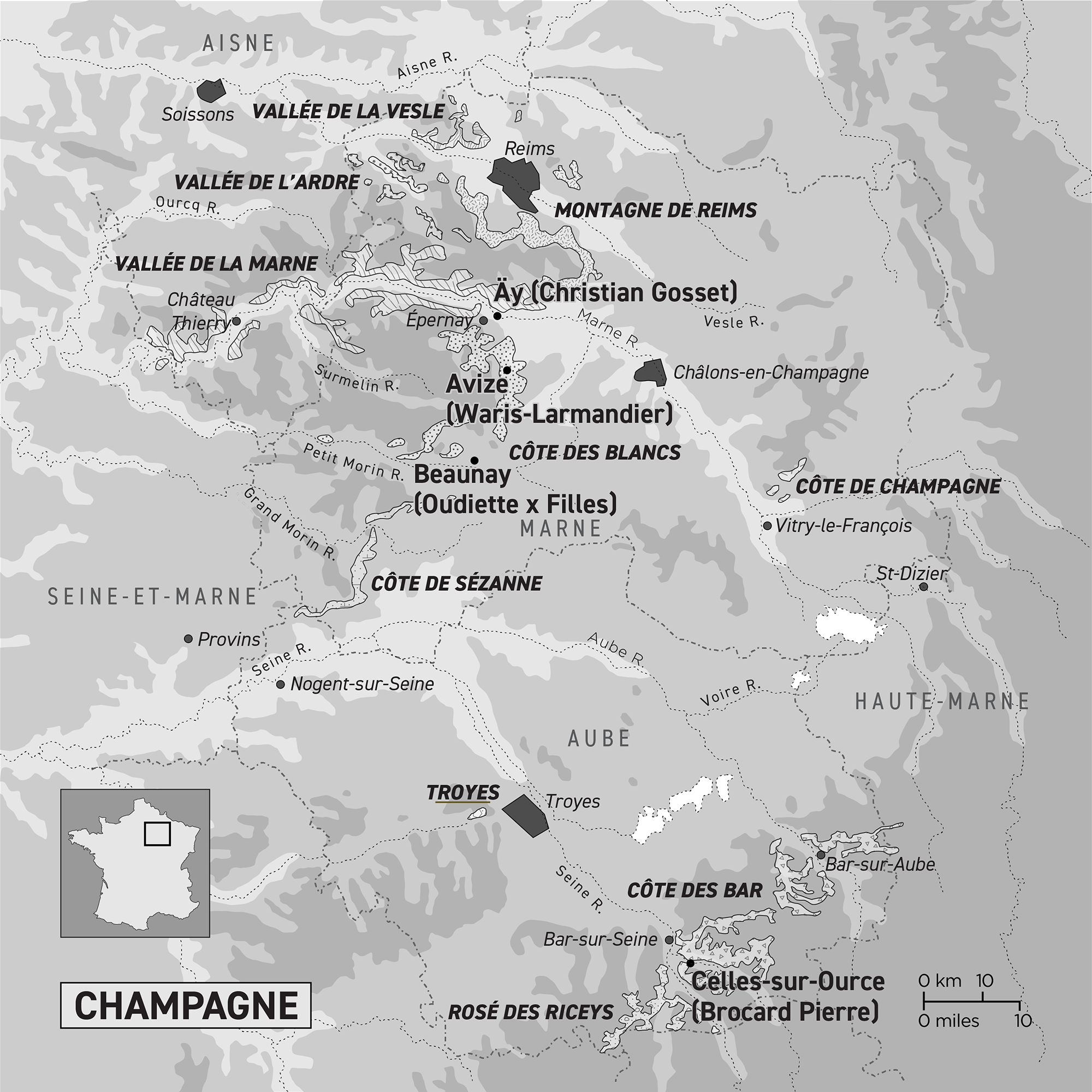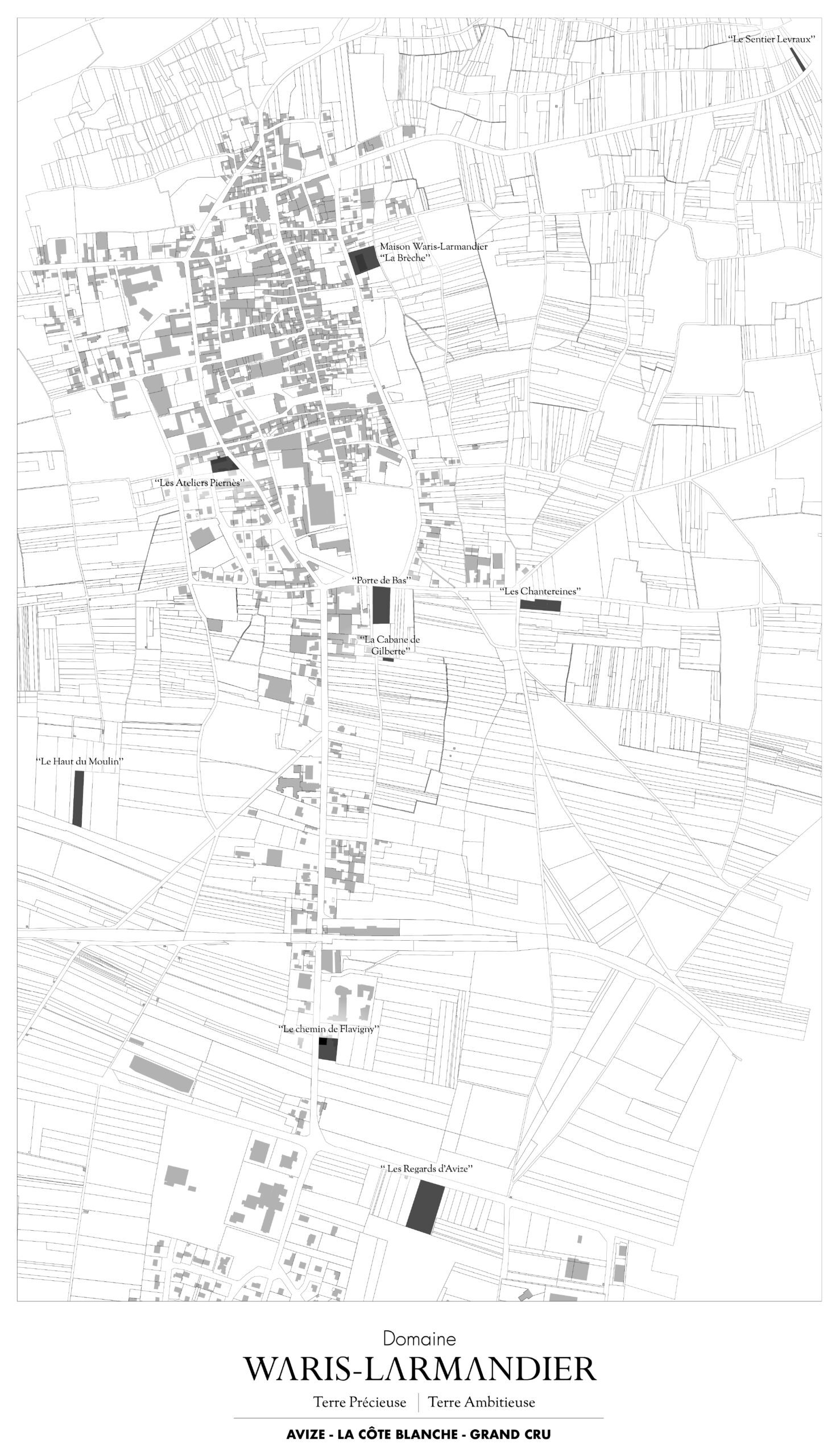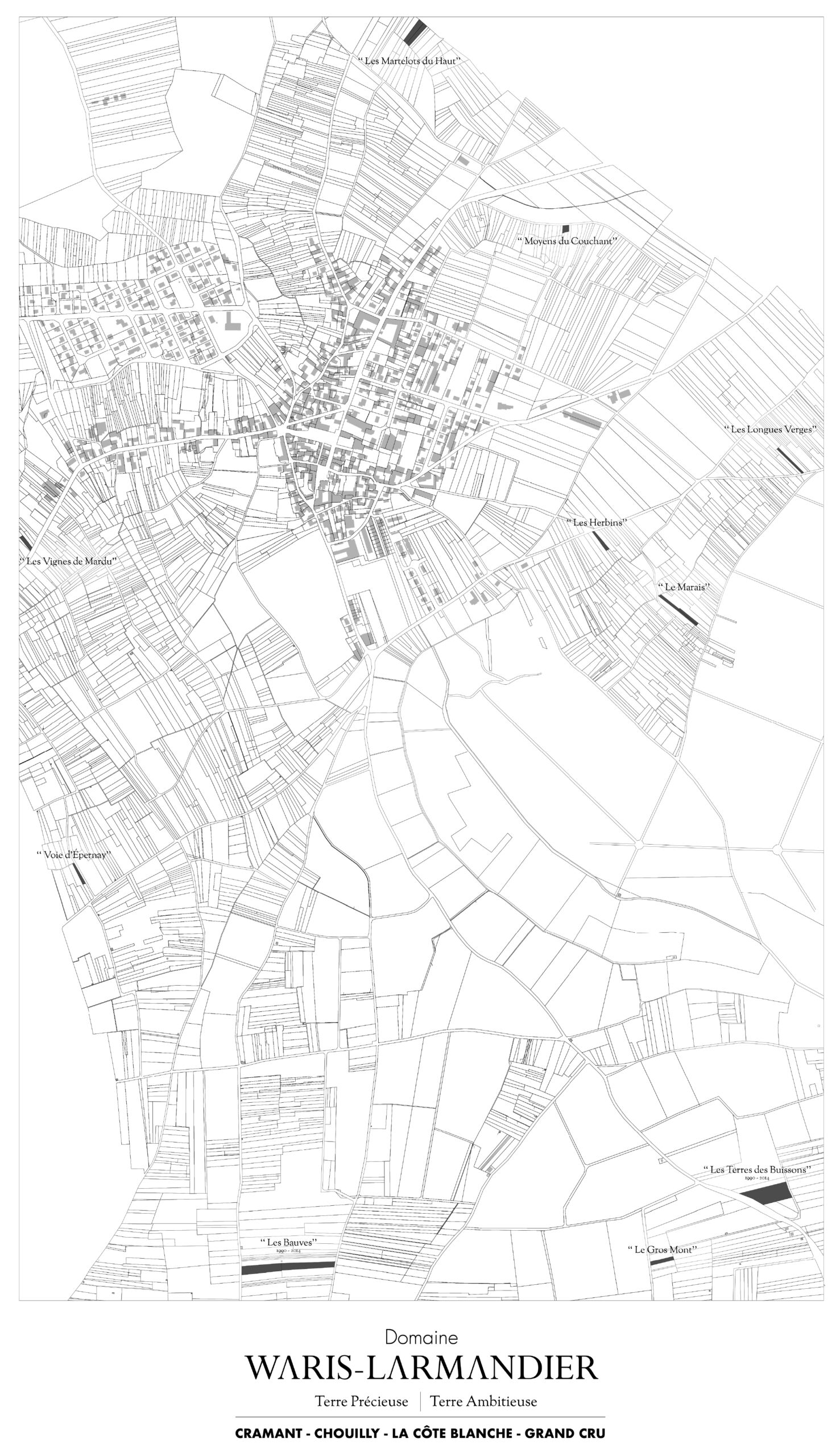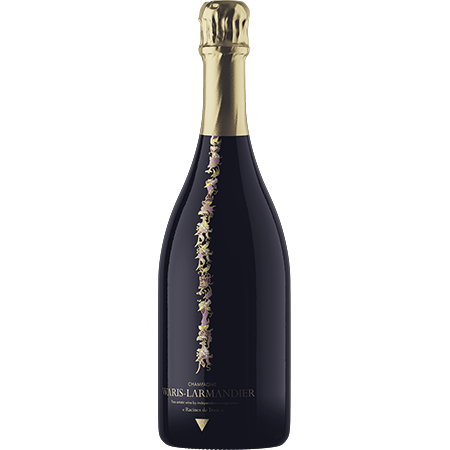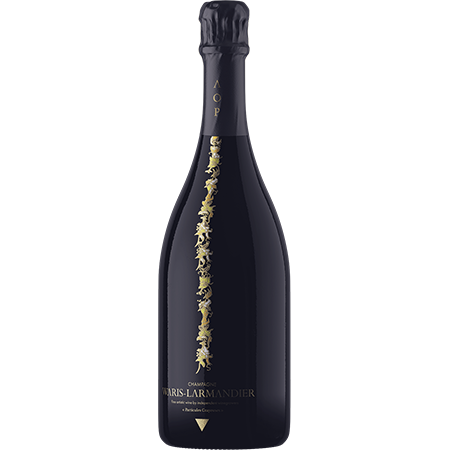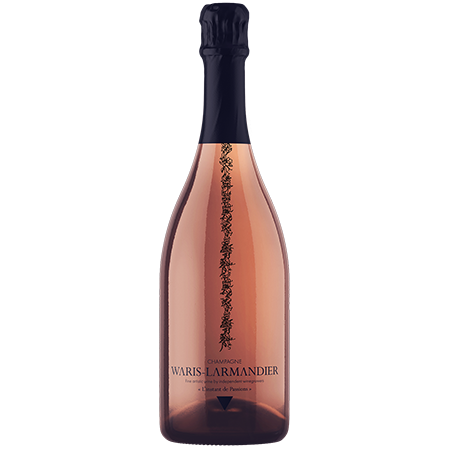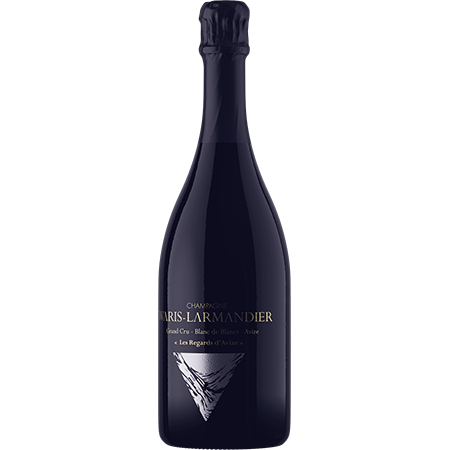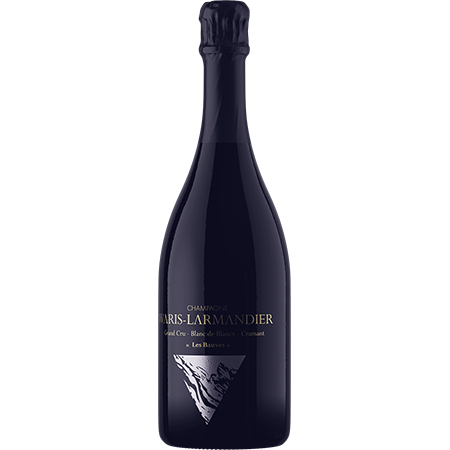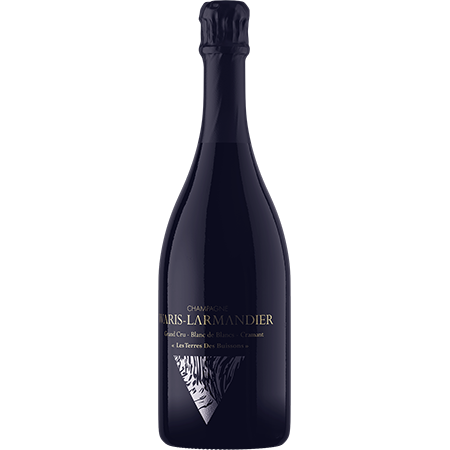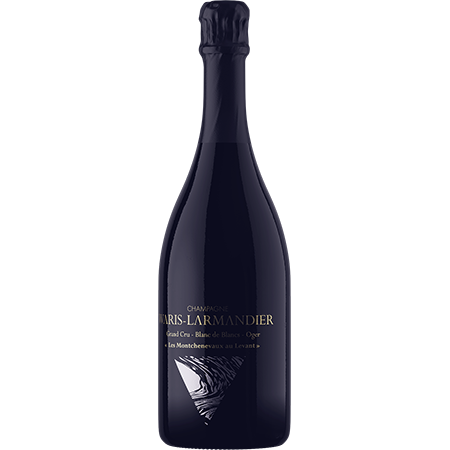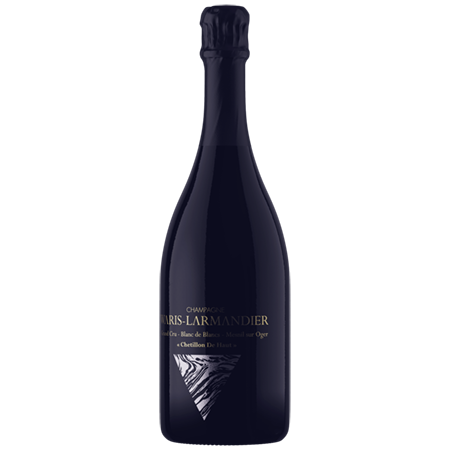Waris-Larmandier
Located in Avize, in the heart of the Côte des Blancs,
Waris-Larmandier Champagne was founded in 1989 by 5th generation grower, Marie-Hélène Larmandier, and her husband, Vincent Waris. Following Vincent’s passing, Marie-Hélène continued the family business while also managing her family estate of Guy Larmandier with her brother. Our story and relationship start with the next generation at Waris-Larmandier, led by eldest-son Jean-Philippe Waris. He took charge of the vineyards and winemaking in 2009, after working with Benoît Lahaye to learn biodynamic farming, among other lessons. Jean-Philippe immediately began converting his family’s 9ha of old-vine vineyards in 2011, utilizing biodynamic and regenerative farming principles. Waris-Larmandier achieved their biodynamic certification from Demeter in 2020.
Today, he is joined by his architect brother, Pierre-Louis, and sister Inès, a designer and sculptor. The artistically minded siblings have all recently returned to their native village of Avize, not only to contribute to the family winery but also to transform their way of life, organized around their artistic and agrarian sensibilities. Together, with their mother, they form the racines de trois or “three roots” of Waris-Larmandier, each contributing a unique piece to the artistic vision of this young, dynamic Champagne domaine. Inès designed the distinctive floral labels in tribute to her mother’s famous flower boxes, which beautifully adorn their whitewashed family home in the vineyards at the entrance to the quaint Avize village.
Waris-Larmandier owns prime, old-vine vineyards of Grand Cru chardonnay in the Côte des Blancs, located in the villages of Chouilly, Cramant, Avize, Oger, and Le Mesnil-sur-Oger. They also farm a smaller percentage of pinot noir and pinot meunier vineyards in the Montagne de Reims as well as a few small plots in the Côte des Bar and Aube. Specializing in Blanc de Blancs Champagne, the Waris-Larmandier style is understated, structured, and ultra-elegant.
Their family history is a similar story to other winemaking families in small, famous wine regions; they are related to everyone. Marie-Hélène is, of course, from the famous Larmandier family, her cousins own Larmandier-Bernier in Vertus, and her brother is the winemaker for their family winery Guy Larmandier. Also, the Gimonnets of Cuis are cousins. The late Vincent Waris’ side of the family includes his brother who produces the Waris-Hubert label, also in the village of Avize where his ancestors settled from Finland five generations ago. Such is a family history in Champagne.
Jean-Philippe is a passionate evangelist of biodynamic farming methods…
and has absolute respect for each terroir, with an ultimate focus on site-specific Champagne. In addition to his efforts at Waris-Larmandier, he also works for a consulting company to help other vineyard managers convert to biodynamic agriculture. Jean-Philippe’s quest for excellence has led him to experiment with lesser-known historic grape varieties, extended periods of aging, utilizing local barrels from Avize as well as separating single-vineyard parcels. There is an incredible amount of energy at the winery set to propel them into the future. An interesting point of note is that their wines ferment to an atmospheric pressure of 4.5 bar, in contrast to many Champagnes, which are 6 bar. This low pressure gives the wine a very fine and creamy mousse and delicate texture that is never aggressive or overwhelming. It is an intentional reference to the tradition of this style in their village and the preference of long-time customers. The result is that Waris-Larmandier reads as more of a gastronomic Champagne, which shines when paired with fine cuisine, rather than a rough, overly-carbonated aperitif Champagne. This distinction makes their produce incredibly food-friendly and compatible with many different styles of cuisine. They also feel that the lower pressure allows the terroir of their old-vineyards to express themselves more clearly, as winemakers often try to hide inferior terroir or winemaking with excessive carbonation.
Grapes are hand-harvested and crushed in a traditional wooden vertical press at their uncle’s Guy Larmandier property; only free-run juice is used for the primary fermentation by indigenous yeasts. Notably, they are one of the very few Champagne houses that continue the tradition during harvest of the communal housing, feeding, and entertaining of the 35 harvest workers required to pick their harvest by hand. Marie-Hélène is there, making sure everyone is fed and comfortable so they can do their best work as one cohesive team. This is how it used to be in Champagne during harvest, and how it still is for the Waris-Larmandier family.
Wines since the 2013 vintage are fermented in used, open-top Burgundy barrels, as well as local barrels from Avize, allowing for maximum complexity expression. Liqueur de tirage and dosage (if included) are clarified grape musts from their vineyards. There is a gentle hand with regards to dosage at the winery, which is included in the two primary cuvées: Racines de Trois and Particules Crayeuses, however it is not used in the single-vineyard lieu-dit wines. There is no winemaking-by-recipe here; everything is taken into account for each individual vineyard, vintage, and cuvée to reveal itself in the most honest, clear way possible.
Waris-Larmandier wines are really Champagnes made in the vineyard, where you will find Jean-Philippe 90% of the time. One of his more recent passions is in his transformation of their trellising from the typical guyot system, which is low to the ground, to raising his vines into a modified single-curtain canopy. The first vineyard where they did this is located directly visible from the road from Cramant to Avize, which has had the effect of making some of the old-guard think they are insane. However, effective management of the canopy allows them to get more airflow into their bunches, keeping them healthier while protecting them from deadly frosts and pests near the ground. This is the innovative and iconoclastic vision of the Waris siblings. They are here to improve things, and they do not care what you think.
Cuvée Racines de Trois represents the “three roots” of Waris-Larmandier,
which are: the contribution of the three siblings to the project, and their use of three grape varieties (chardonnay and pinot noir and meunier) from three regions of Champagne: Côte des Blancs, Montagne de Reims, and Aube. Together they form their entry-level Champagne, which combines the structure of chardonnay with the red-fruit characteristics from the two pinots in an incredibly drinkable package. Racines de Trois is usually a two-vintage blend without the addition of solera wine. The average élevage for Cuvée Racines de Trois is as follows: the base wines are aged 6-to-18 months before secondary fermentation in bottle, followed by 24-to-36 months of lees aging, sur lattes.
Particules Crayeuses is their flagship Blanc de Blancs cuvée, sourced from the estate’s biodynamically farmed, old-vine chardonnay plots in the Grand Cru villages of Chouilly, Cramant, Avize, Oger, and Le Mesnil-sur-Oger. Particules Crayeuses is barrel-fermented with indigenous yeasts and is usually a two vintage blend with the addition of a small amount of wine from a solera started in the 2013 vintage. This Blanc de Blancs is understated, structured, and ultra-elegant. The average élevage for Particules Crayeuses is as follows: the base wines are aged 6-to-18 months before secondary fermentation in bottle, followed by 24 to 36 months of lees aging, sur lattes.
The most exciting chapter for the Waris-Larmandier estate lies in their exploration of Grand Cru villages through the limited releases of old-vine, lieux-dits vintage Champagnes. They began their terroir project with a focus on two vineyards, which are very special to the family: Porte de Bas, a vineyard planted by their great-grandfather Jean Waris in 1939 near the winery in Avize, and Les Bauves, a lieu-dit from a vineyard planted in 1962 in Cramant. The future holds the release of up to nine more lieu-dit terroir wines from Grand Cru villages. Recent and upcoming releases include: Les Regards d’Avize in Avize and Les Terres Des Buissons in Cramant (both planted in 1963), La Carelle, a vineyard planted in 1976 in Chouilly that their great-grandmother Renée Diebolt won at a flea market, and a majestic Les Chetillons in Le Mesnil-sur-Oger.
Wines from this series are released after a minimum of five years élevage in bottle. Once they are tasted by the family and deemed ready for sale in very limited quantities, as production of each cuvée is less than a thousand bottles, depending on the vintage. The base wines for the vintage-dated lieux-dits age for 6-to-18 months before secondary fermentation in bottle, followed by a minimum of five years of lees-aging sur lattes under natural cork. All of the lieux-dits wines are hand-disgorged and finished with a top-quality, extra-long natural cork to ensure the resulting wine will continue to develop elegantly in bottle.
With all three siblings now back living and working in the village of Avize, each contributes to the future vision of the project, including transforming their holdings to polyculture farming with a biodynamic vegetable garden for a future hospitality kitchen they are building in an old barn. Design is by Pierre-Louis and Inès, of course. The future of grower-Champagne is indeed bright in the Waris-Larmandier family.

